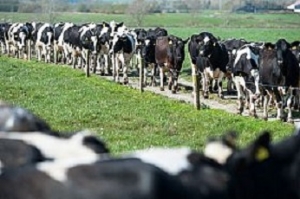Economic - Markets
What Makes Milk Prices Today Different Than 2014?

There are similarities between markets today and those we experienced in 2014, but important differences could mean sustained higher price levels this time around.
The current price environment has been mainly driven by farmers’ responses to the margin outlook for 2022. In both the European Union and the U.S. this past summer, milk prices were muted while costs climbed for feed, labor, energy and just about everything else. Combined milk production in the Big-7 milk-producing regions of the world pushed into negative YOY growth in Q4 2021. This dramatic tightening of the global milk supply is lifting global dairy commodity prices.
When dairy prices rose to similar levels in 2014, the EU was in the process of removing its quota system. As prices climbed, the floodgates opened, and EU farmers rapidly expanded milk production. The result was an accumulation of government-owned skim milk powder stocks that overhung the market through 2019 and subsequent significant price declines. In contrast, there is no comparable pent-up production ready to hit the market this time around.
Today, conversely, some factors could act as a cap on production growth.
In the EU and New Zealand, environmental regulations are limiting growth potential for dairies.
In the U.S., tiered pricing programs and base programs are a barrier to unchecked expansion. These mechanisms have been around at times in the past, but they were used sparingly. They became a prominent feature of COVID-era milk marketing to manage through supply chain disruptions and channel shifts. Currently, base programs are less about a lack of plant capacity to handle milk and more about staffing challenges forcing processing plants to run reduced shifts.
Given the outlook for labor, farmers could be facing base programs throughout 2022. That possibility paired with cost inflation make expansion plans, especially plans that would require construction or additional labor, less than appealing.
RaboResearch’s outlook is for global production to remain muted in 2022. The U.S. industry is beginning the year with fewer cows than a year ago, and we believe cow herd size should level out. The U.S. will experience negative YOY production growth through the first half of the year. This will support higher milk prices, but not without cost pressures continuing to creep in from every angle.
2022 will be a year to manage milk price risk with a keen eye toward margins. Carefully monitor those costs that can’t easily be managed. Consider financial instruments that provide as clear a view as possible of where pressure is being felt to help you manage through the next year.























